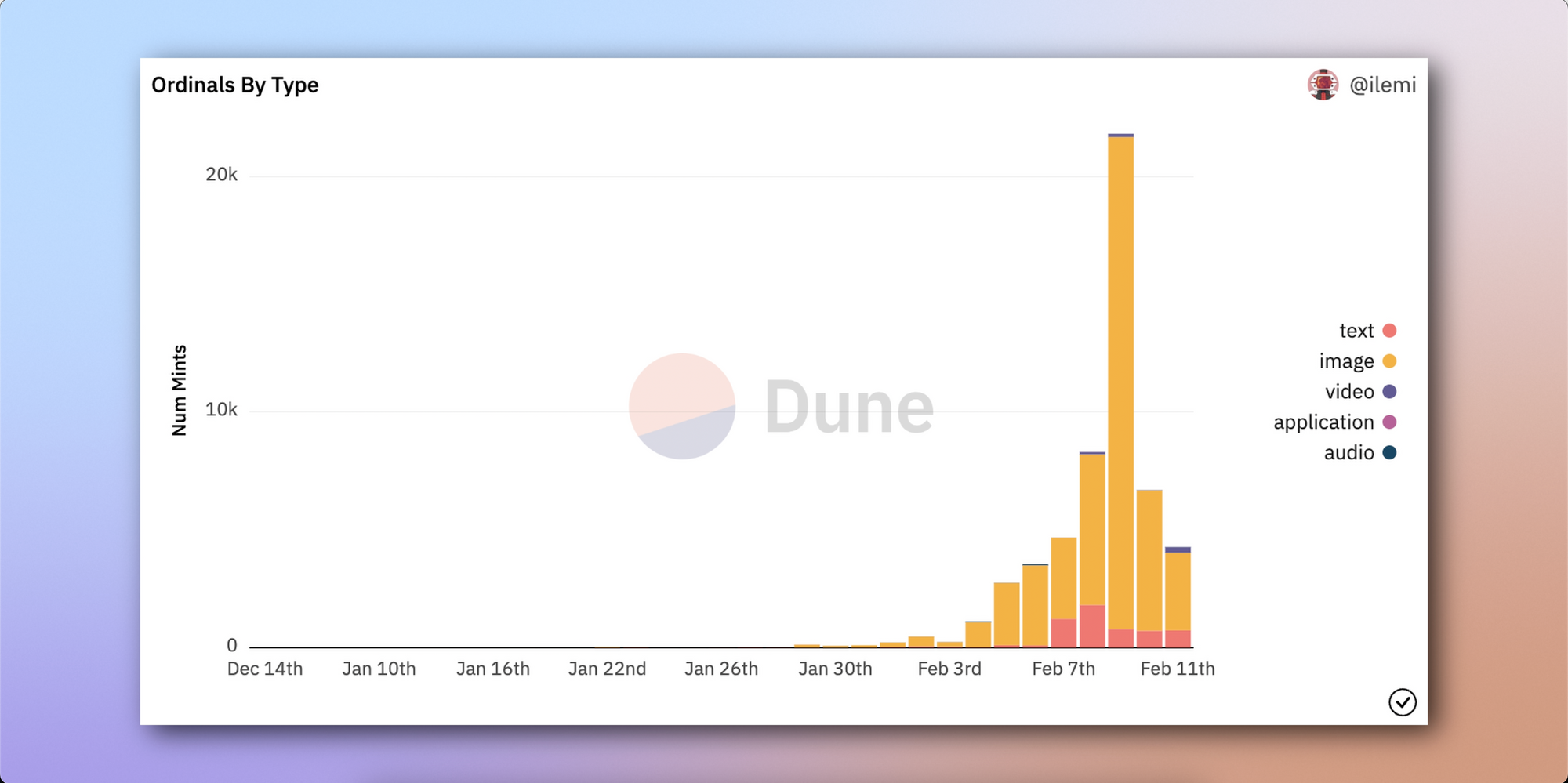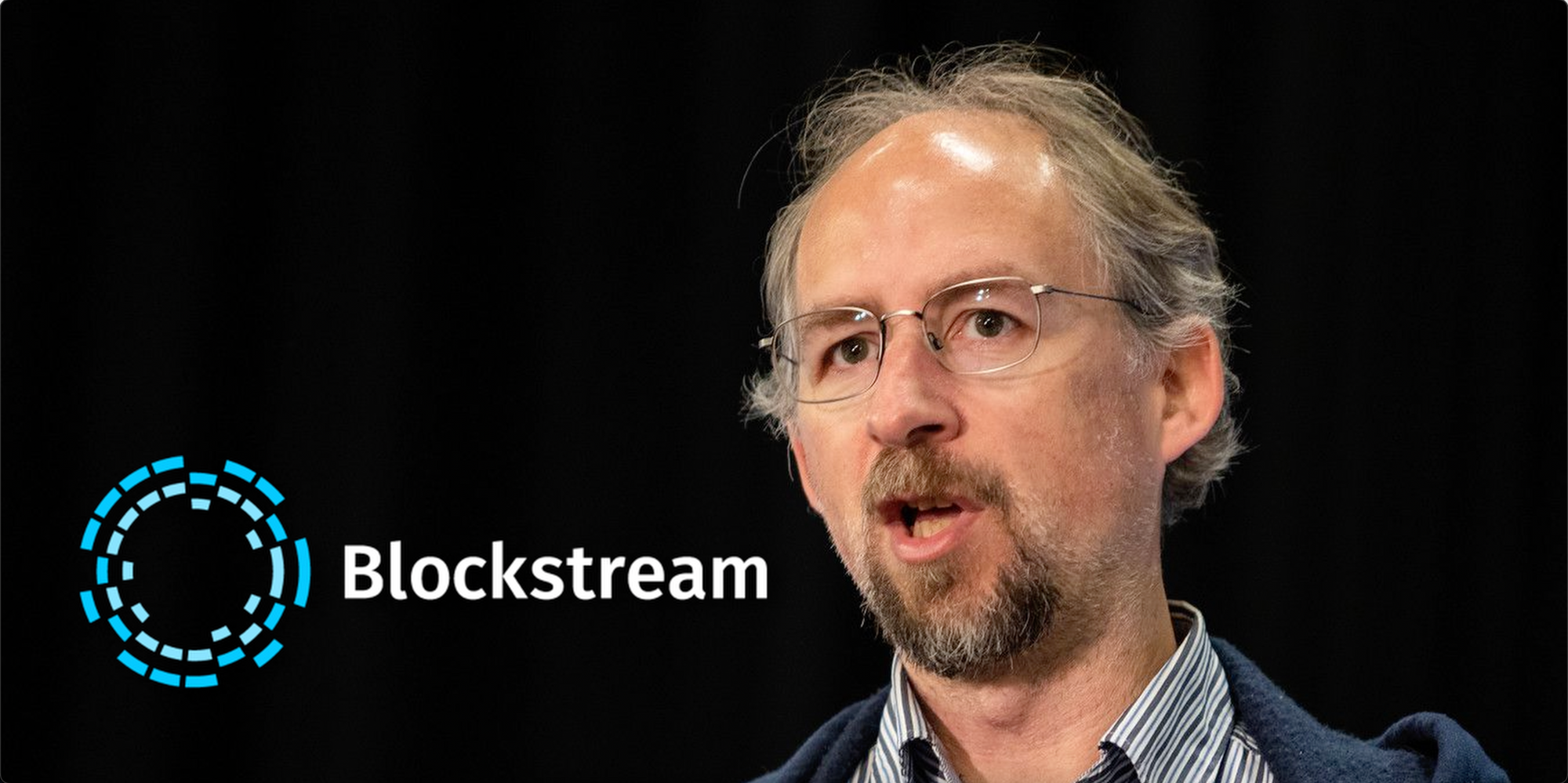Despite Bitcoin Core developers’ best efforts to completely neuter Bitcoin and stop people from using it, a new use-case has emerged, and people are now using Bitcoin to mint NFTs. This is done through the Ordinals protocol created by developer Casey Rodarmor, which launched on the Bitcoin mainnet on January 21st, 2023. Unlike NFTs on Ethereum which generally only store an IPFS link in the blockchain, Ordinals allow you to embed images in the Bitcoin blockchain itself and this is what’s known as an inscription. Incredibly, you can mint these Bitcoin NFT’s far more cheaply than on Ethereum.

It only took a few days for the word to spread, resulting in explosive growth of Ordinals. At the time of filming, nearly 50,000 NFTs have been inscribed on the Bitcoin blockchain, Bitcoin is experiencing its highest transactions per day in the last year, and Bitcoin transaction fees have risen which means more revenue for miners. In the past 6 days, Ordinals inscriptions have accounted for approximately 50% of Bitcoin block space. Much of Ordinals success can be attributed to the promotional efforts of Udi Werthhimer, who created the Taproot Wizards community. Here memelords and jpeg enthusiasts gathered to pushback against the gatekeepers who oppose the minting of NFTs on the Bitcoin blockchain. Perhaps the greatest achievement of the Taproot Wizards, thus far, is the mining of the largest block containing the largest transaction in Bitcoin’s history. The behemoth 4 megabyte block was the result of a single Taproot Wizard NFT being inscribed into the blockchain. All these rising metrics and renewed interest in Bitcoin is extremely positive news, so why are Bitcoin Core developers vehemently opposed to Ordinals?

Adam Back is the CEO and co-founder of Blockstream, the company that has largely directed Bitcoin Core development since 2014. He is on record encouraging miners to “censor the crap as a form of discouragement”, to which he received massive backlash. In an Orwellian fashion, Adam then retracted the tweet and reworded the statement to say, people need to be educated and encouraged to not allow inscriptions on Bitcoin’s blockchain. Fellow Blockstream co-founder and Bitcoin Core dev, Luke Dashjr, has voiced similar opinions by saying “is anyone working on a spam filter for this garbage yet” and labelling Ordinals inscriptions as a “denial of service spam attack against Bitcoin”. He then published a patch for Bitcoin nodes that filters out all transactions related to Ordinals. Ironically, Ordinals was only made possible due to Bitcoin features introduced and spearheaded by these very developers. When Segregated Witness was implemented in 2017, to benefit their company Blockstream’s for-profit sidechains, they relaxed the limit on witness data sizes and gave witness data a 75% fee discount compared to regular Bitcoin transactions. Further, the addition of Taproot in 2021 made it easier to store arbitrary witness data in Bitcoin transactions. Ordinals developer Casey Rodamor merely leveraged these features and now suddenly it’s a huge problem because they’re not being used as intended. But that’s not the only reason.

Blockstream, the company that Adam Back, Luke Dashjr and many other Bitcoin Core developers co-founded in 2014, has a competing Bitcoin NFT solution on their Liquid sidechain. This is a massive conflict of interest. The Liquid sidechain has been around for a couple of years now but has basically seen non-existent use for the purpose of NFTs. Ordinals by comparison, through the work of a single man, has generated way more hype, awareness and attracted more people to Bitcoin in just a few weeks. That’s something Blockstream couldn’t do with hundreds of millions of dollars and control over Bitcoin development. It’s clear that the Blockstream business model is threatened by Ordinals, as it has effectively made Liquid NFTs obsolete. This is why we’ve seen the likes of Adam Back and Luke Dashjr attempt to gaslight Bitcoiners into believing that Ordinals is an attack on Bitcoin, when they themselves are the ones attacking it. Small block extremists, lead by Luke Dashjr, have now renewed their push to reduce Bitcoin’s block size to 300 kilobytes via soft fork, to stop Ordinals and force people to mint NFTs on Blockstreams Liquid sidechain. In the past, the same Bitcoin Core developers followed a similar approach, where they declined to raise the Bitcoin block size even though blocks were full. This resulted in elevated on-chain fees and was a deliberate attempt to encourage users to make payments on Blockstream’s Lightning Network sidechain instead.

These Bitcoin developers are rotten to their core. On one hand they promote the narrative that Bitcoin is permissionless and censorship resistant money, but then advocate censorship and employ measures to prevent people from using Bitcoin in ways which do not suit their agenda. The good news is that right now it appears a rebellion against them is brewing and if they take action against Ordinals, it could be the straw that breaks the camel’s back. On another note, how does Luke Dashjr still have commit access on the Bitcoin Core repo after admitting he was repeatedly hacked in the last 2 months? After all, the false pretence of a hack was used to justify ousting Gavin Andresen in 2016. Read this article to discover how Luke Dashjr’s incompetence resulted in the theft of 216 Bitcoins and learn the dark truth revealed by the incident.




